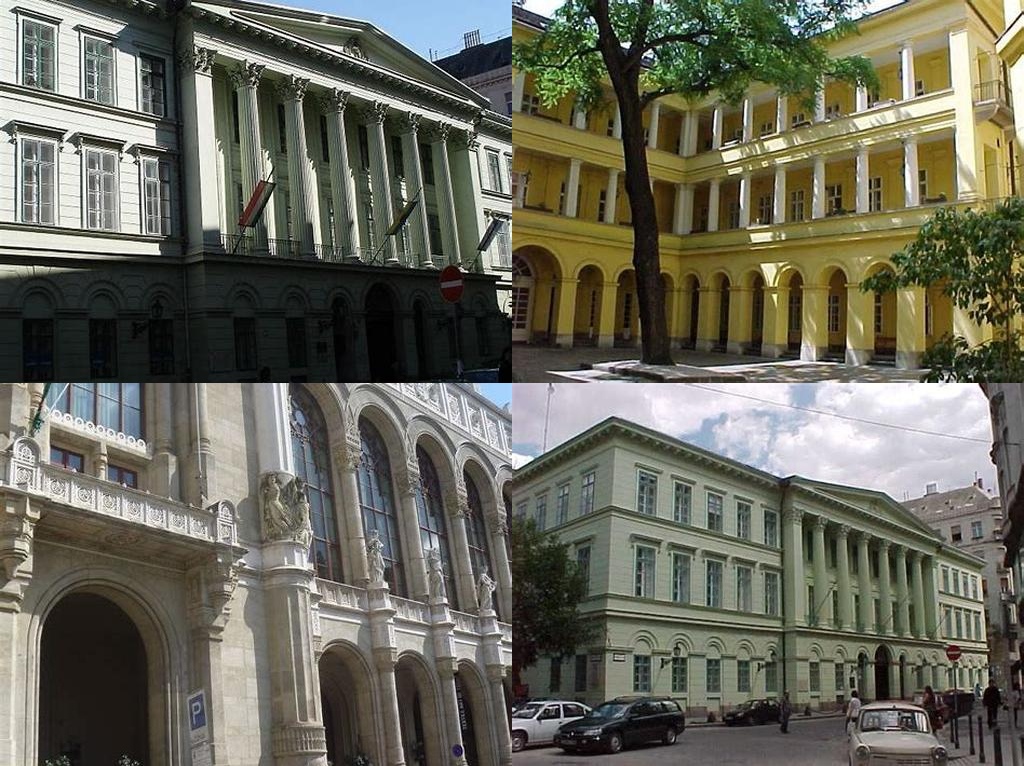
Pesti megyeháza sits just a stone’s throw from the rhythmic pulse of Kossuth Lajos utca, yet it feels like a world apart from the busy present. This grand, slightly austere building has weathered centuries of history and countless transformations—and walking its grounds, you instantly sense the difference between a structure built for glory and one thrown up for convenience. The original Pest County Hall was completed in 1806, a time when the city swelled with innovation but still felt the influence of the Hussars and the reformers alike. Designed by the brilliant architect József Hild, whose name echoes across Budapest, the hall is a footprint in stone from the height of classicism in Hungary. If you pause outside and gaze up at the stately façade, you’ll notice the harmonious symmetry and the restrained elegance that defined the era: columns that lend it the look of a Greek temple, lofty windows, and delicate decorative friezes.
Step inside, though, and the story continues far past stone and stucco. For over two centuries, Pesti megyeháza has stood witness to debates, declarations, and dramas that shaped not only Pest County, but all of Hungary. Imagine the echo of footsteps as county officials, revolutionaries, and diplomats crossed the tiled floors in waistcoats and sashes during the heated months of 1848. The building was the nerve center during the Hungarian Revolution and again during the years of reform, serving as the stage for passionate speeches on national identity, language, and progress. But it’s not just the monumental official history that gives the Hall its charm. If you venture into quieter corners, perhaps the dignified Assembly Hall, you might find less famous—yet equally authentic—moments: the bustle of local governance, handwritten ledgers splayed open, a tired clerk peering through pince-nez.
What makes Pesti megyeháza irresistible to visitors who dig a little deeper is how well its architecture and surroundings capture the layered reality of Budapest’s past and present. Around it, modern city life ebbs and flows, yet this hall stays rooted like an ancient oak. The gardens and courtyards are something of a hidden gem—often overlooked by passersby rushing to the more popular sites. Sit here on a spring afternoon, when the plane trees sway and conversations echo off the flagstones, and you feel time slow down. There’s poetry in the battered stone lions guarding the entrance, in the soft creak of wooden stairs worn smooth by generations of feet, and in the pastel light pouring through arching windows.
One understated joy of Pesti megyeháza is crossing paths with locals who know and love the building. Guided tours, when available, often reveal stories you won’t find in guidebooks—a whispered anecdote from a caretaker, a glimpse into civic rituals, or a memory of childhood visits. The blend of grand halls and intimate chambers offers a richly textured glimpse into the evolution of Hungarian governance and daily life. Every crevice and corridor seems to echo with overlapping lives—lords and clerks, rebels and reformers, families attending public ceremonies. It’s the kind of place where history feels tangible, just beneath your fingertips.
Visiting Pesti megyeháza offers a rare window into the quieter, more thoughtful side of Budapest. It’s not loud with tourists, nor polished to distraction. Instead, it rewards slow wandering—lingering in sunlit courtyards, peeking into shadowy corridors, or simply sitting on the steps to watch the city hum around you. The Hall stands as a reminder that history isn’t just monuments or dates on plaques; sometimes it’s a living, breathing presence. If you’re willing to seek it out, you’ll find that Pesti megyeháza is a rare survivor and a uniquely rewarding stop in any Budapest journey.





